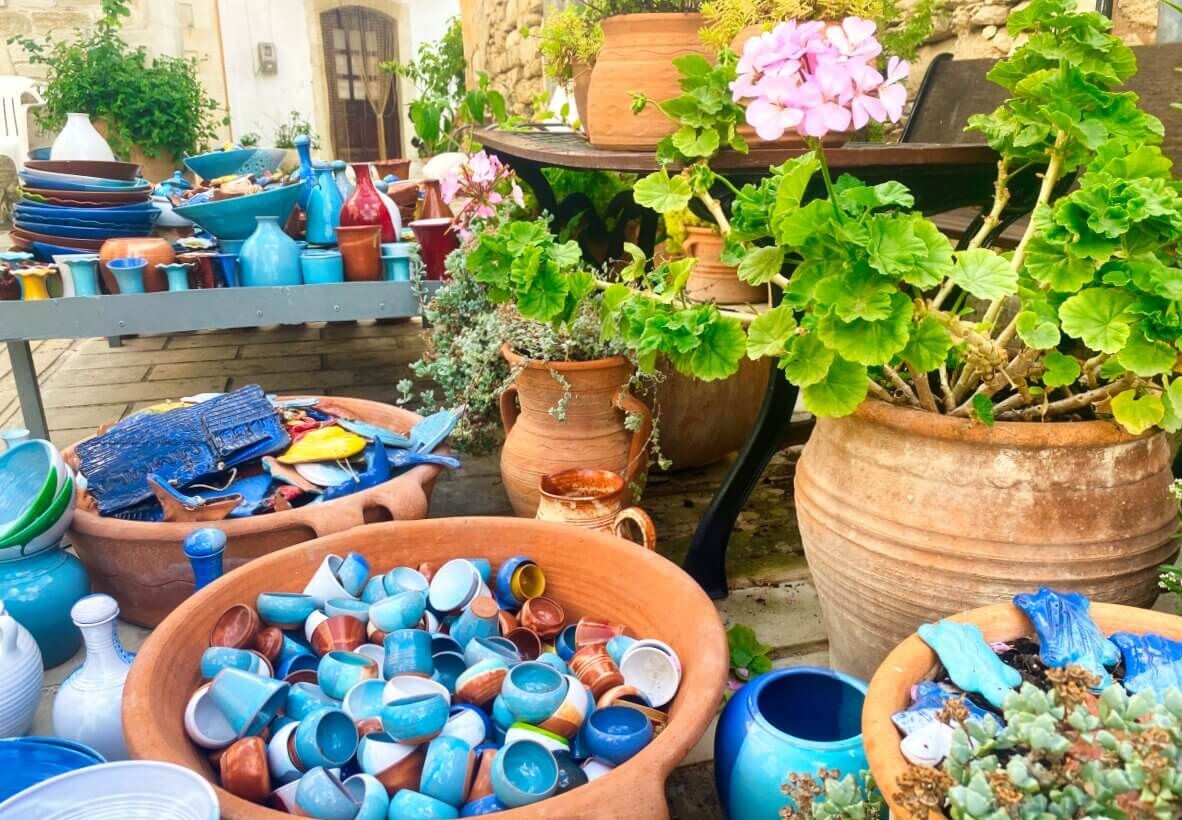Crete, the largest and most southerly of the Greek islands, is not only famous for its breathtaking landscapes and rich history but also for its vibrant tradition of artisanal craftsmanship. From intricate pottery and hand-woven textiles to aromatic olive oils and exquisite jewelry, Crete’s artisanal products reflect the island’s cultural heritage and the skills passed down through generations. By supporting local artisans, visitors and residents alike can contribute to the preservation of these age-old crafts and the sustainable development of the island’s economy. This guide explores the diverse range of artisanal products in Crete and highlights the importance of supporting local craftsmanship.
The Rich Tradition of Cretan Pottery
Pottery is one of the oldest crafts in Crete, dating back to the Minoan civilization. The island’s potters are renowned for their skill and creativity, producing a variety of functional and decorative items. Villages like Margarites and Thrapsano are famous for their pottery workshops, where artisans create beautiful vases, bowls, and jars using traditional techniques.
- Minoan-Inspired Designs: Many Cretan potters draw inspiration from ancient Minoan motifs, incorporating spiral patterns, marine life, and geometric shapes into their designs. These pieces not only serve as practical items but also as works of art that capture the island’s historical essence.
- Modern Interpretations: While honoring tradition, some potters also experiment with contemporary styles and glazes, creating unique pieces that appeal to modern tastes. Supporting these artisans helps keep the craft alive and encourages innovation within the tradition.
Hand-Woven Textiles: A Living Heritage
Textile weaving is another deeply rooted tradition in Crete, with women in many rural villages still practicing the craft. Looms are used to create intricate patterns and designs that are turned into rugs, blankets, and clothing.
- Traditional Patterns: The weavings often feature traditional Cretan patterns, which include geometric shapes, floral motifs, and symbolic representations. Each piece tells a story, reflecting the island’s cultural identity and the weaver’s personal touch.
- Quality Materials: Cretan textiles are typically made from high-quality materials such as wool and cotton, ensuring their durability and comfort. By purchasing these handmade items, consumers support the local economy and help preserve an important cultural practice.
Exquisite Jewelry: Crafting Timeless Elegance
Cretan jewelry, known for its exquisite craftsmanship, draws inspiration from various historical periods, including Minoan, Byzantine, and Venetian influences. Skilled jewelers create stunning pieces using gold, silver, and semi-precious stones.
- Filigree and Granulation: Techniques such as filigree and granulation, which involve intricate detailing and fine metalwork, are commonly used in Cretan jewelry. These techniques require great skill and patience, highlighting the artisan’s expertise.
- Symbolic Designs: Many pieces feature symbolic designs, such as the double-headed eagle from Byzantine times or motifs inspired by nature. These elements add a layer of meaning to the jewelry, making them more than just decorative items.
Olive Oil and Natural Products: The Essence of Crete
Olive oil is an integral part of Cretan culture and cuisine. The island’s olive groves produce some of the highest quality olive oil in the world. Artisans also create a range of natural products using olive oil and other local ingredients.
- Extra Virgin Olive Oil: Cretan extra virgin olive oil is prized for its rich flavor and health benefits. Small producers often use traditional methods to press the olives, ensuring the highest quality oil. Supporting these producers helps maintain sustainable agricultural practices.
- Natural Cosmetics: Olive oil is also used in the production of natural cosmetics, such as soaps, lotions, and balms. These products, often infused with local herbs like oregano and thyme, offer a natural alternative to commercial cosmetics and support local businesses.
Leather Goods: Crafting Durability and Style
Cretan leather goods, including sandals, bags, and belts, are renowned for their durability and craftsmanship. Artisans use high-quality leather and traditional techniques to create items that are both stylish and long-lasting.
- Traditional Sandals: Cretan sandals, known for their comfort and simplicity, are a popular choice for both locals and tourists. Each pair is handmade, ensuring a unique product that embodies the island’s craftsmanship.
- Custom Leatherwork: Many leather artisans offer custom services, allowing customers to choose the design and fit of their items. This personalized approach ensures a perfect match for the customer’s needs and supports the artisan’s livelihood.
The Importance of Supporting Local Artisans
Supporting local artisans in Crete is vital for several reasons:
- Cultural Preservation: Purchasing artisanal products helps preserve traditional crafts and techniques that might otherwise be lost. This cultural heritage is an invaluable part of the island’s identity.
- Economic Sustainability: Buying local products supports the island’s economy by providing income for artisans and their families. This economic support helps sustain rural communities and promotes sustainable development.
- Environmental Impact: Locally-made products often have a smaller environmental footprint compared to mass-produced goods. Artisans typically use locally-sourced materials and traditional methods, which are more sustainable and environmentally friendly.
Conclusion
Crete’s artisanal products offer a unique glimpse into the island’s rich cultural heritage and the skills of its craftsmen and women. From pottery and textiles to jewelry and olive oil, each item tells a story of tradition, creativity, and craftsmanship. By supporting local artisans, you contribute to the preservation of these traditions and the sustainable development of Crete’s economy. Whether you’re a visitor looking for a meaningful souvenir or a resident seeking high-quality, handmade goods, Crete’s artisanal products provide a connection to the island’s vibrant cultural legacy.


